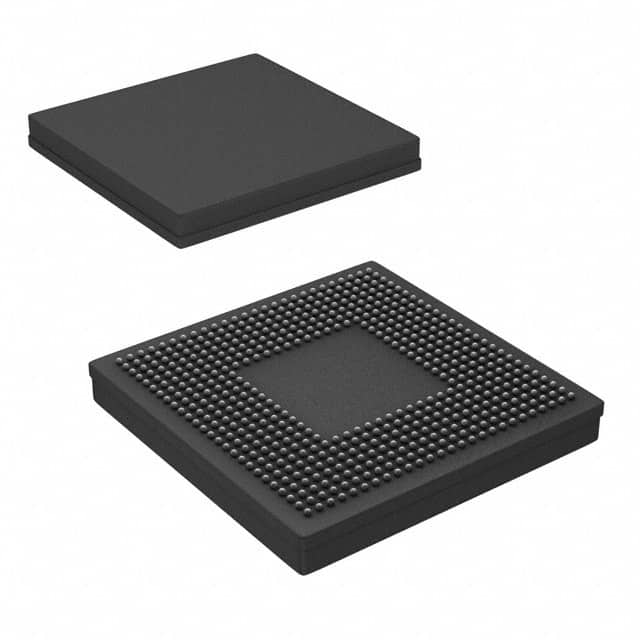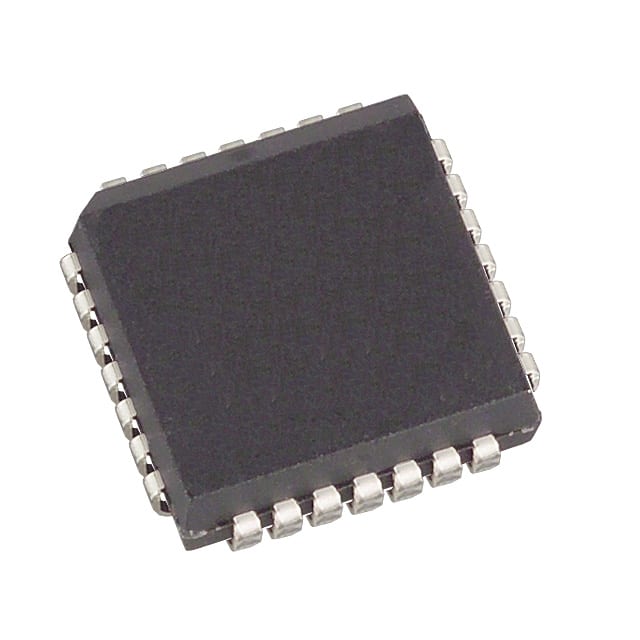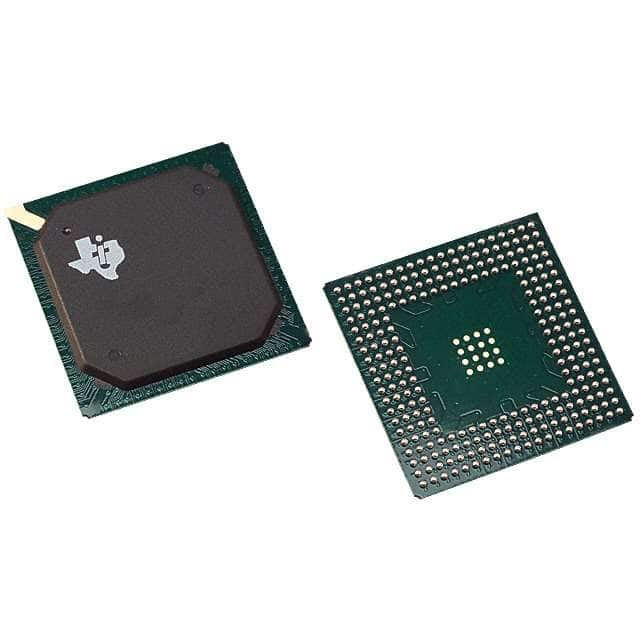TMS320C6712GFN100 Product Introduction:
Texas Instruments Part Number TMS320C6712GFN100(Embedded - DSP (Digital Signal Processors)), developed and manufactured by Texas Instruments, distributed globally by Jinftry. We distribute various electronic components from world-renowned brands and provide one-stop services, making us a trusted global electronic component distributor.
TMS320C6712GFN100 is one of the part numbers distributed by Jinftry, and you can learn about its specifications/configurations, package/case, Datasheet, and other information here. Electronic components are affected by supply and demand, and prices fluctuate frequently. If you have a demand, please do not hesitate to send us an RFQ or email us immediately sales@jinftry.com Please inquire about the real-time unit price, Data Code, Lead time, payment terms, and any other information you would like to know. We will do our best to provide you with a quotation and reply as soon as possible.
Introducing the Texas Instruments TMS320C6712GFN100, a powerful and versatile digital signal processor (DSP) designed to meet the demanding needs of today's advanced applications. With its exceptional performance and extensive feature set, this DSP is the ideal solution for a wide range of industries and applications.
The TMS320C6712GFN100 boasts a clock speed of up to 225 MHz, allowing for lightning-fast processing of complex algorithms and real-time data. Its integrated memory architecture includes 256KB of on-chip RAM and 1MB of on-chip flash memory, providing ample storage for code and data. Additionally, the DSP supports a wide range of peripherals, including UART, SPI, I2C, and GPIO, enabling seamless integration with other devices.
This DSP is specifically designed for applications that require high-performance signal processing, such as audio and speech processing, telecommunications, industrial automation, and medical imaging. Its advanced features, such as the integrated floating-point unit and the ability to execute multiple instructions in parallel, make it an ideal choice for applications that demand real-time processing and high computational accuracy.
The TMS320C6712GFN100 is not only powerful but also highly efficient, with low power consumption and a small form factor. Its robust architecture and extensive development tools, including a comprehensive software development kit (SDK) and a range of development boards, make it easy to design and deploy applications quickly and efficiently.
In summary, the Texas Instruments TMS320C6712GFN100 is a high-performance DSP that offers exceptional processing power, extensive features, and a wide range of application fields. Whether you are working on audio processing, telecommunications, industrial automation, or medical imaging, this DSP is the perfect choice to meet your needs.
DSP Digital Signal Processing (Digital Signal Processing) is a technology that uses computers or special processing equipment to digitize signals. It converts analog signals into digital signals, and uses efficient algorithms to sample, transform, filter, estimate, enhance, compress, identify and other operations, and finally gets a signal form that meets people's needs. Compared to general-purpose processors, DSPS typically have higher arithmetic throughput, lower latency, and more efficient memory management mechanisms, all of which are designed to meet the requirements of real-time signal processing.
Application
DSP (Digital Signal Processing) technology is mainly reflected in the accurate processing of signals. It can efficiently perform complex operations such as signal analysis, noise suppression and feature extraction, and provide reliable data support for subsequent decision or control. In addition, DSP also has high-speed computing power and low power consumption characteristics, especially suitable for scenarios that require real-time processing of large amounts of data, such as audio processing, video codec, communication systems, image processing, control systems and robots, medical and bioinformatics and other fields.
FAQ about Embedded - DSP (Digital Signal Processors)
-
1. What is embedded DSP?
Embedded Digital Signal Processor (EDSP) is a processor specially used for signal processing. It has been specially designed in terms of system structure and instruction algorithm, and has high compilation efficiency and instruction execution speed. Embedded DSP processors are good at high-speed implementation of various digital signal processing operations, such as digital filtering, spectrum analysis, etc.
Embedded DSP processors have been specially designed for system structure and instructions, making them suitable for executing digital signal processing algorithms, with high compilation efficiency and high instruction execution speed. This special design includes the optimization of DSP hardware structure and instructions, so that it can efficiently handle complex signal processing tasks.
-
2. What are the disadvantages of DSP in embedded systems?
The main disadvantages of DSP in embedded systems include sound quality problems, high resource consumption, high development difficulty and high cost.
First of all, the disadvantages of DSP in embedded systems are mainly reflected in the following aspects:
Sound quality problem: DSP is a device that integrates multiple audio processing functions. In order to pursue high reliability, it usually uses a lower version of Bluetooth technology, such as Bluetooth 4.2, which may result in the sound quality not as expected and affect the audio quality.
High resource consumption: DSP requires high computing power and complex algorithms when processing signals, which will lead to a large consumption of system resources and may affect the normal operation of other functions.
High development difficulty: DSP development requires in-depth knowledge of digital signal processing, and different hardware platform tools are not unified, which increases the complexity and difficulty of development.
High cost: Since DSP chips and related development tools are relatively professional, their cost is relatively high and not suitable for all application scenarios.
What is an embedded system signal?
Embedded system signals are a simulation of the interrupt mechanism at the software level and an asynchronous communication method. Signals can directly interact between user space processes and kernel processes, and kernel processes can also use them to notify user space processes of system events. If the process is not currently in execution, the signal is saved by the kernel until the process resumes execution and then passed to it; if a signal is set to block by the process, the transmission of the signal is delayed until its blockage is canceled and it is passed to the process.
What is a DSP processor?
A DSP processor, or digital signal processor, is a computer chip specifically used to process digital signals. This processor has the characteristics of high performance, low power consumption and programmability, and is widely used in audio, video, communication, radar and industrial control.
The working principle of DSP processor mainly includes receiving analog signals from external input, converting them into digital signals, then performing calculations on the digital signals, and finally interpreting the digital data back to analog data or actual environment formats in other system chips. Its main feature is high-speed real-time processing, which can extract and process information in a high-speed real-time environment. It is widely used in key areas of industry and military, such as radar signal processing and communication base station signal processing.
-
3. What is the difference between DSP and FPGA?
The main difference between DSP and FPGA lies in their design purpose, structure, programming method and applicable scenarios.
First of all, there are fundamental differences between DSP and FPGA in design purpose and structure. DSP (digital signal processor) is designed for digital signal processing, with a dedicated instruction set and hardware accelerator for efficient processing of digital signals. FPGA (field programmable gate array) is a programmable logic device that can be programmed according to user needs to realize various digital logic circuits. FPGA contains a large number of logic gates and triggers inside, usually using a lookup table structure, while DSP uses a Harvard structure, with separate data bus and address bus, allowing programs and data to be stored separately to increase processing speed.
In terms of programming methods, DSP is usually programmed through assembly or high-level languages (such as C/C++) and has a complete C language compiler. FPGA is designed through hardware description language, which has high flexibility but high programming complexity. DSPs are relatively easy to program because they are designed for specific types of computing tasks, while FPGAs offer greater flexibility but are more complex to program.
Finally, DSPs and FPGAs are suitable for different application scenarios. DSPs are suitable for tasks that require high-speed processing of large amounts of digital signals, such as communications, audio processing, image processing, and other fields. FPGAs are suitable for applications that require highly customized hardware acceleration, such as high-performance computing, complex signal processing, and more. The flexibility of FPGAs makes them more advantageous in projects that require frequent changes in functionality, while DSPs perform better in applications that require efficient processing of fixed algorithms.
 Lead free / RoHS Compliant
Lead free / RoHS Compliant





























